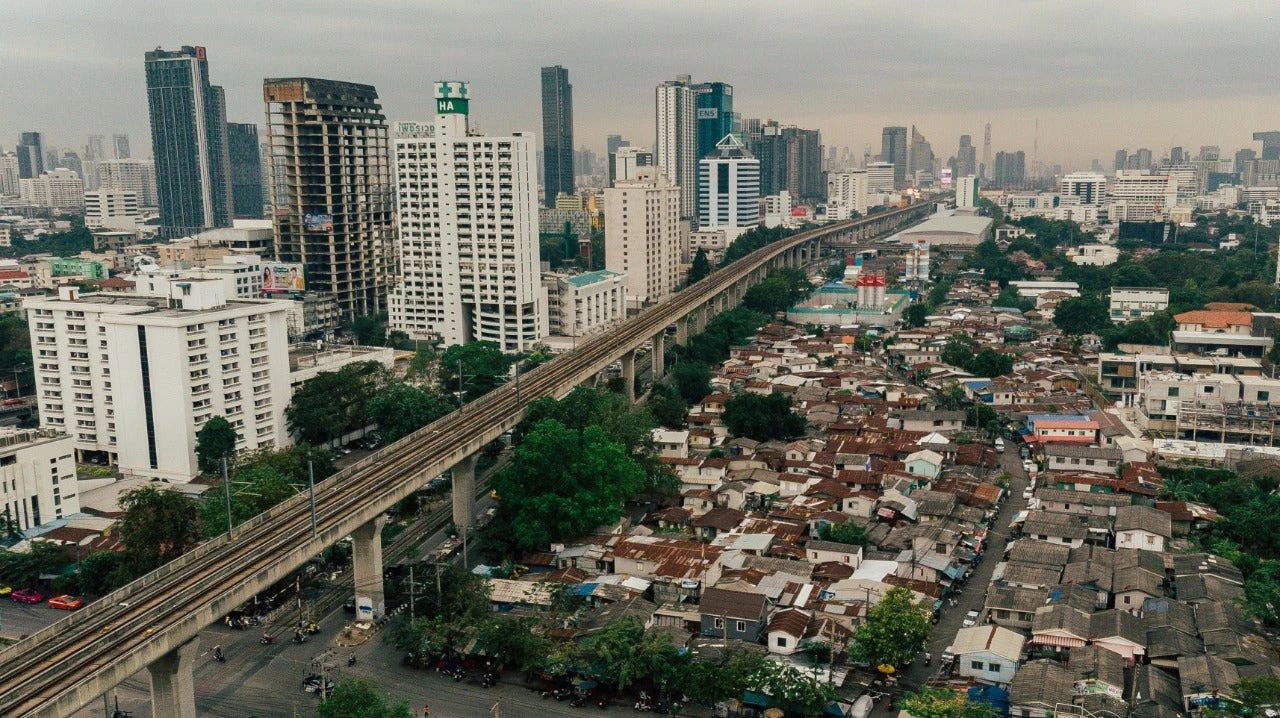Thailand has transitioned from a low-income to an upper middle-income country in a single generation. Poverty has declined to 7.1 percent in 2015 – as measured by the international upper-middle income class poverty line – and access to basic education and health has become nearly universal. Despite all these historic achievements, inequality remains a key concern for Thai people.
According to a 2014 Pew global survey, 90 percent of Thais think the gap between the rich and the poor is a significant problem. A 2018 Gallup poll finds that only 39 percent of Thais feel their standards of living are getting better, the lowest share among all East Asian countries surveyed. These perceptions can be related to a sense of lack of mobility, or they can be related to shifting views of the quality of life.
Why is the discussion of inequality in Thailand important?
The subject of income inequality is not just interesting for us economists. Globally, the topic has gained new prominence since the Great Recession - the period of economic decline observed in world markets during the late 2000s and early 2010s. In fact, many argue that income inequality is a major, or the major, social issue of our time.
Income inequality — as measured by the Gini coefficient — has significantly declined in Thailand over the past two to three decades, but less so in recent years. Estimates by the National Economic Social Development Council (NESDC) show that until 2015 inequality decreased, both, if we look at income or expenditure per capita. However, for 2017 World Bank estimates of the Gini coefficients are again slightly higher compared to 2015. Perhaps more important, in recent years, household consumption and household income growth in Thailand has been uneven, both across regions and income groups. From 2015 to 2017, average household consumption grew by 1.3 percent. However, among the bottom 40 percent of the population consumption shrank by 0.6 percent. At the same time, income grew in the Central, North, and South regions but shrank in Bangkok and the Northeast regions. When certain regions enjoy new development, while others remain largely unchanged, perceptions and realities around higher inequality are fueled.
A new debate in recent literature emphasizes the role of inequality of opportunity. A number of studies demonstrate that inequality of opportunity affects negatively the future income growth of the poor and positively that of the rich. Inequality of opportunity may harm economic growth because it hinders the accumulation of human capital by low-income households. Perceptions of unequal opportunities may also reduce individual aspirations and thus investments in human capital. The risk is that income inequality becomes entrenched across generations. The good news is that we may now have a better idea of what to do about it. With more equitable investment in human capital, inequality may be successfully addressed.
For Thailand, accelerating more and better investments in people will be important. That way, not only the country’s gross domestic product can grow – a measure of how well a country in aggregate is doing – but also household income and consumption, which are the indicators of how well people are doing.
What can be done to reduce inequality for the next generation in Thailand?
Governments can play a role in equalizing opportunities as Thailand has done by establishing an inequality unit under the NESDC to reduce social and economic disparities.
It would also be critical for Thailand to improve access and quality of services during the early years of human capital formation.Uneven education quality is a serious obstacle and weakens the impact of rising educational attainment. Learning gaps in Thailand are above the average for ASEAN countries and for upper-middle income countries. A Thai child born today can expect to obtain 12.4 years of school before age 18. However, the same child can expect to complete only 8.6 learning-adjusted years of schooling, indicating a learning gap of 3.8 years.
Thailand’s learning gap reflects a shortage of qualified teachers and inadequate educational services for children under the age of six. The country’s numerous small schools tend to have high operating costs and variable levels of quality. Consolidation may yield significant efficiency gains.
Even as child health and nutrition outcomes continue to improve, Thailand faces an array of new challenges, including the rising incidence of non-communicable diseases and overnutrition. The top three risk factors for mortality and morbidity are dietary risks, tobacco consumption, and high body-mass index. Over the past 15 years, Thailand’s prevalence of diabetes and hypertension have tripled and quadrupled, respectively, and combined with high rates of road injuries, has negatively affected adult survival rate. Only 85 percent of 15-year-olds are expected to live past age 60. Thailand’s adult survival rate is below the global median.
If Thailand acts now, investments in human capital today will have a cumulative impact over the next few decades. And if that investment pays close attention to addressing inequality, all people in Thailand will have a better chance to prosper.
A version of this blog appeared in the Bangkok Post



Join the Conversation